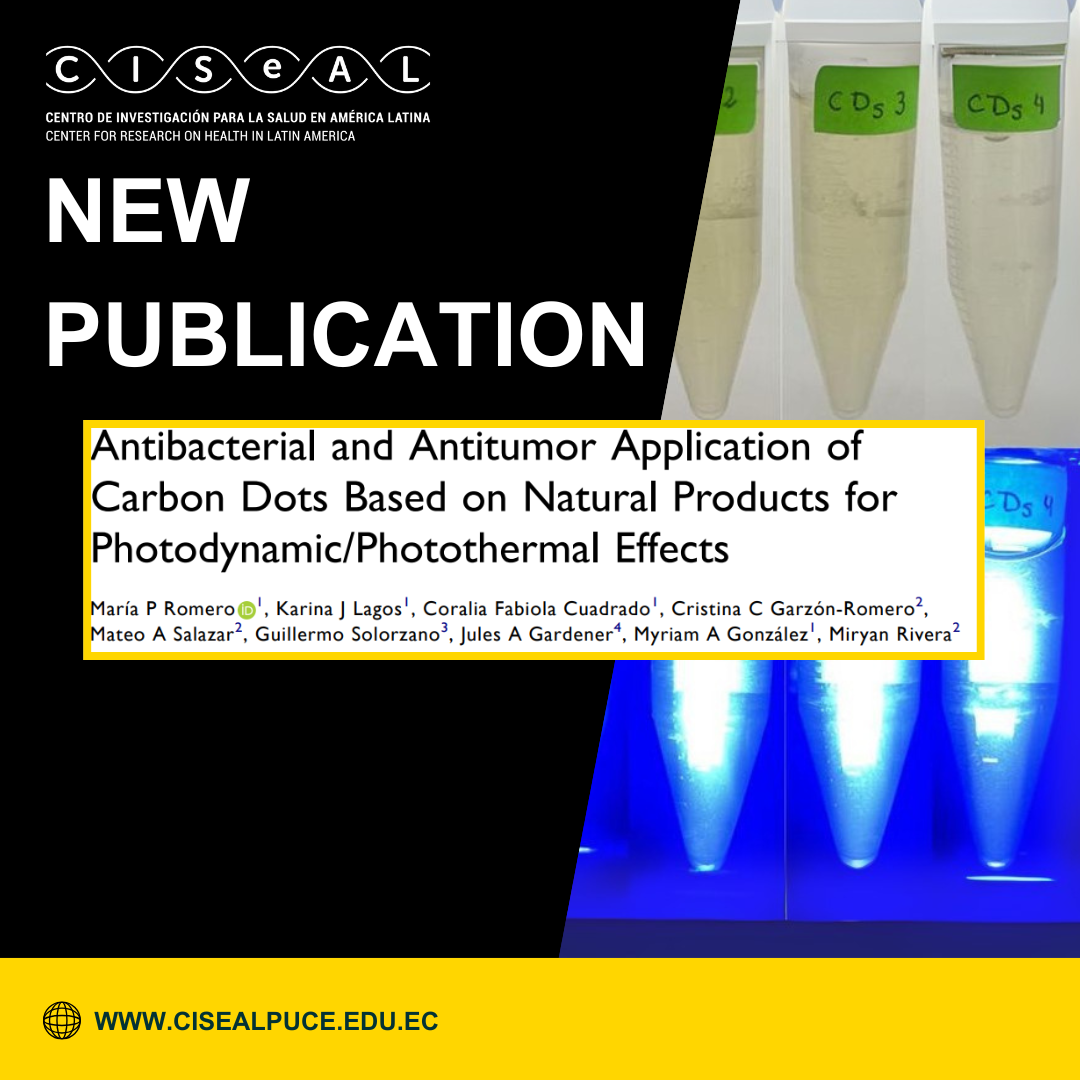
The article, in which Miryan Rivera, a CISeAL researcher, participates together with her laboratory technician Mateo Salazar, presents a green and efficient synthesis strategy for obtaining carbon dots (CDs) from natural products such as annatto (Bixa orellana), cinnamon (Cinnamomum verum), and turmeric (Curcuma longa), using a microwave-assisted technique that stands out for its speed, simplicity, and environmental compatibility. Four types of CDs (CDs1, CDs2, CDs3, and CDs4) were generated from aqueous dispersions of these extracts and sucrose, and were characterized by transmission electron microscopy (TEM), dynamic light scattering (DLS), Fourier transform infrared spectroscopy (FTIR), and Raman spectroscopy. The obtained CDs presented irregular shapes and sizes ranging from 2.3 to 3.7 nanometers, exhibiting luminescent and photoactivated properties with the ability to generate singlet reactive oxygen species (¹O₂) and produce temperature increases between 40 and 50 °C upon irradiation with blue light (450 nm, 40 mW·cm⁻²).
These properties translated into potent antibacterial activity against multidrug-resistant strains such as methicillin-resistant Staphylococcus aureus (MRSA) and extended-spectrum β-lactamase (ESBL)-producing Escherichia coli, with complete inhibition observed in CDs derived from annatto, cinnamon, and turmeric. Likewise, antitumor activity was evaluated against T47D cells, with a positive cytotoxic effect observed. The results demonstrate that it is possible to obtain bioinspired nanomaterials with dual therapeutic properties by taking advantage of readily available natural resources, and position these CDs as a promising alternative in the development of photodynamic and photothermal nanomedicine for the treatment of infectious diseases and cancer.
Do you want to know more about this research? We invite you to read the full article at:



